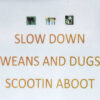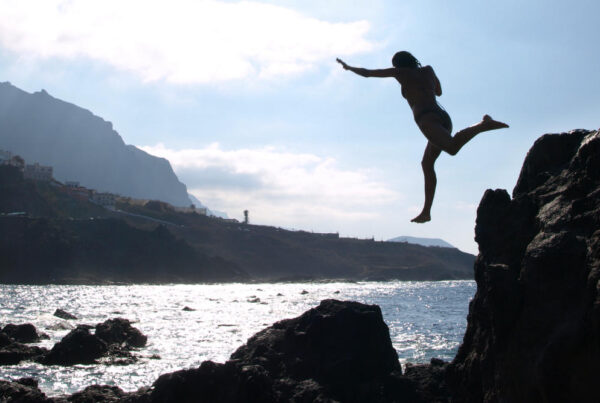I first used the term Eternal Sunshine of the Expat Mind after meeting up with friends visiting Tenerife around this time of year about a decade ago. They were staying in Golf del Sur. We arranged to meet in Santa Cruz de Tenerife because the weather was dodgy where they were. They were delighted to find blue skies and warm weather after leaving their moody resort. While other parts of the island were under a grey shroud, we enjoyed lunch in the sun beneath the cobra hood of the Auditorio de Tenerife.
‘A bar owner said the weather was really unusual,’ one of our friends told us. ‘He couldn’t remember such bad weather as this before.’
‘That’s odd,’ I replied. ‘Because the same thing happened last year, and the year before that.’
That’s when I made the Eternal Sunshine of the Expat Mind remark (borrowed, obviously, from the film Eternal Sunshine of the Spotless Mind).
I was reminded of this after reading reports of storm Nuria battering the Canary Islands. In some places wind speeds reached hurricane levels. Over one hundred storm-related incidents were reported across all the islands. Airports were closed and flights cancelled. British tabloids screamed shocking headlines and people who don’t know the islands pointed to climate change. Maybe it is, maybe it isn’t, but…
The weather is predictable
A hoolie of a storm is common in the Canary Islands at the end of March. It’s typical change of season weather. There are two times of year when a serious storm is more likely than others. One is when summer changes to autumn, the Canaries version of autumn at least. The other is when winter (such as it is) slides into spring.
We produce Canary Islands walking guides for ourselves and for others. We also have a Tenerife walking website. This means it’s essential to have a good handle on what the weather is like throughout the year. When we lived there, it was vital to keep a track of weather patterns to avoid walking when an alert was in place. Subsequently, I monitored Spanish Meteorological Office predictions on an ongoing basis, also recording how the weather actually panned out. These are examples taken from four consecutive years relating to corresponding periods in the past:
“Having experienced torrential rain, a chilly wind, sun and even snow, sometimes in the same place and within the space of an hour, it’s easy to understand why the weather can confuse those who don’t know the weather patterns on the island at various times of the year.”
“The week started spectacularly with snow in Teide National Park, and people flocking to the crater to build snowmen, resulting in closed roads. At lower levels there was heavy rain in many parts of the island and the areas that escaped the rain seemed to get quite strong winds instead.”
“We were walking on Fuerteventura for most of the week where we experienced quite cold and windy weather even though the sun was shining – a weather front that affected the whole of the Canary Islands.”
“The week started with a yellow alert for high waves and strong winds in the north. The strong winds were more blustery than strong and, in the end, affected southern parts more than northern ones.”
In 2015, we abandoned meeting up with a colleague in Teide National Park after being defeated by blizzards. In 2019, we travelled to the Canaries to update walking routes. The initial dates proposed were for the last week in March. We requested these were pushed back into the second week in April. Sure enough, the last week of March saw inclement weather whereas we walked in warm sunshine.
It’s not scaremongering
I get that people who don’t know the Canary Islands are shocked when the weather is severe enough to make headlines in the UK. The reactions on social media are all too predictable, ranging from it being climate change to outright denials. It’s a sign of the times when serious weather alerts from the Spanish Met Office are dismissed as lies or even scaremongering. I’ve seen people currently staying in the Canaries comment there were no warnings where they were, some of these from people in areas where a red alert was in place.
Why the difference?
The answer is simple. Generally speaking, the most reliable immediate news sources are in Spanish. Most British holidaymakers don’t follow Spanish news outlets for obvious reasons. Neither do a significant number of English-speaking residents for that matter. As a result, people confuse not knowing what is happening with not being kept informed. In reality, the amount, and accuracy, of warnings circulated in the Canaries is both detailed and impressive. Then there is the Eternal Sunshine of the Expat Mind factor, as illustrated by the person who commented on social media, ‘I’ve lived here for years, and this has never happened before.’
Some things never change.
The Good News
It’s naïve to expect that an archipelago sitting in the Atlantic is never going to experience inclement weather. Saying that, the climate in the Canaries is about as perfect as exists anywhere on the planet. Storms generally last a couple of days. The sun shines before they arrive, and it shines again as soon as they pass. Those who visited before Nuria arrived and the ones who visit after it departed will probably wonder what all the fuss was about.


















